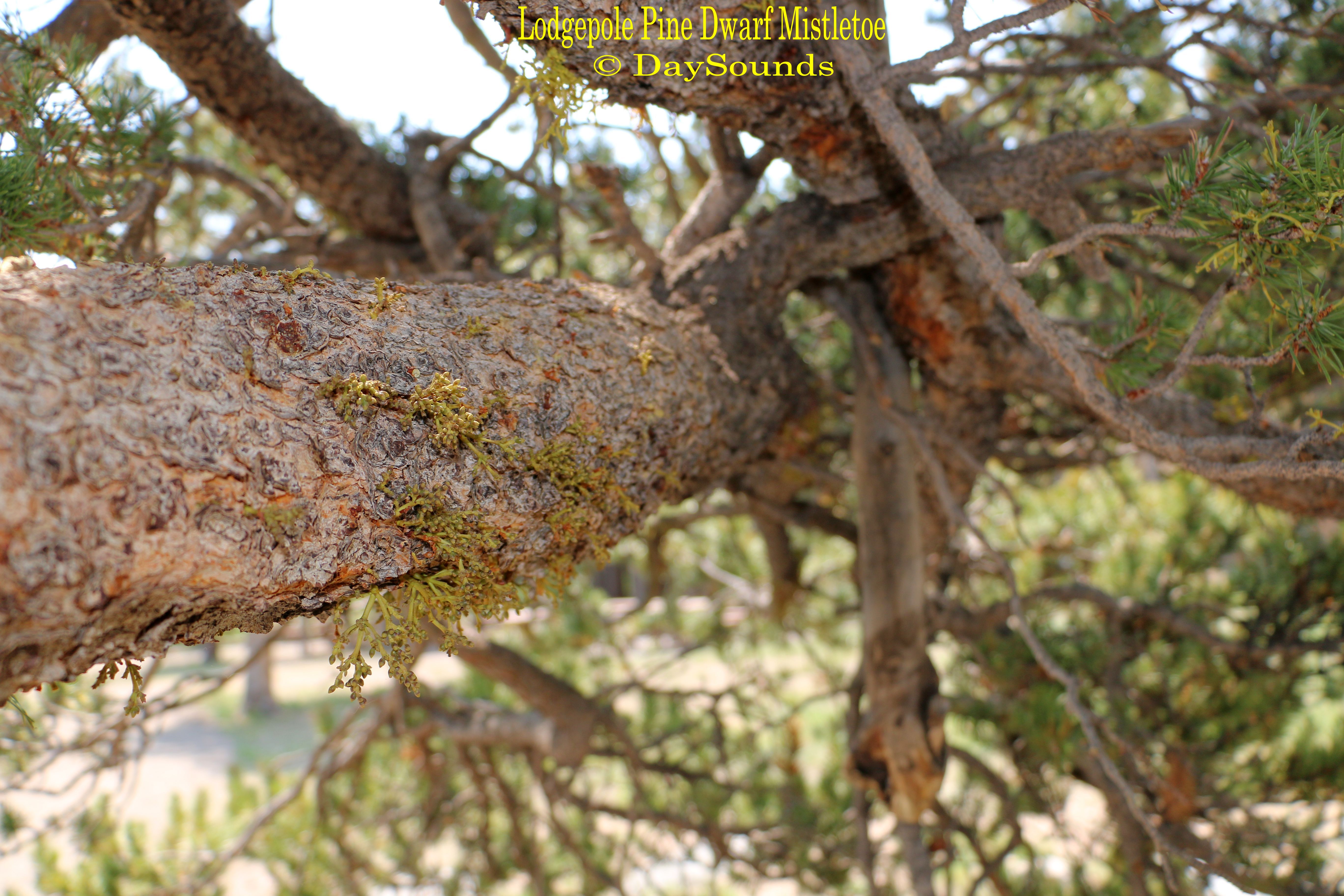by DaySounds © 2013

Lodgepole Dwarf Mistletoe (Arceuthobium americanum)
but slowly takes away the life of its host by absorbing its nutrients.
Many people are under the impression that mistletoe is the cause of witches brooms;
however, the major cause of witches brooms* is rust fungus. Mistletoe has flowers (tiny)
and fruit (football ball-like in this species, white round in others). Its stems and branches
grow closely together, but neither are the twigs of its hosts, nor look like them. It has
green oblong leaves in most species, but not in this one. Rust fungus, on the other hand,
either cannot be seeing or it can appear externally as a rusty, orange, brown, or white
covering on the host's twigs, branches, and/or needles. Its invasion results in the host
growing multiple twigs and branches (its own) in close proximity to one-another, creating
dense witches brooms.
*.- The entanglement of mistletoe twigs and branches is not dense enough to be called
a "witches broom"; however, some people call them both the same, creating a great
deal of confusion. Perhaps, it should be called "False Witches Broom."
People who are still confused, or in doubt, are encouraged to closely look for mistletoe
in a witches broom, if there is no mistletoe, the latter (obviously) cannot be the cause
of the former.
©DaySounds
PO Box 746497
Arvada, CO 80006
USA